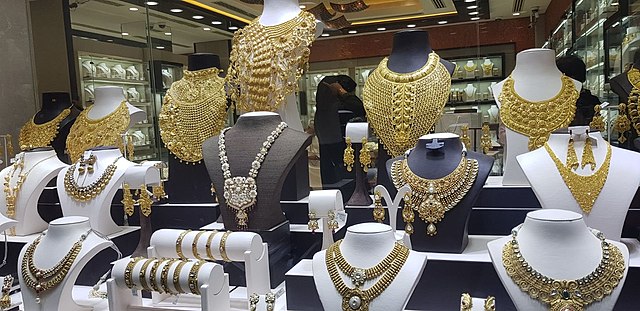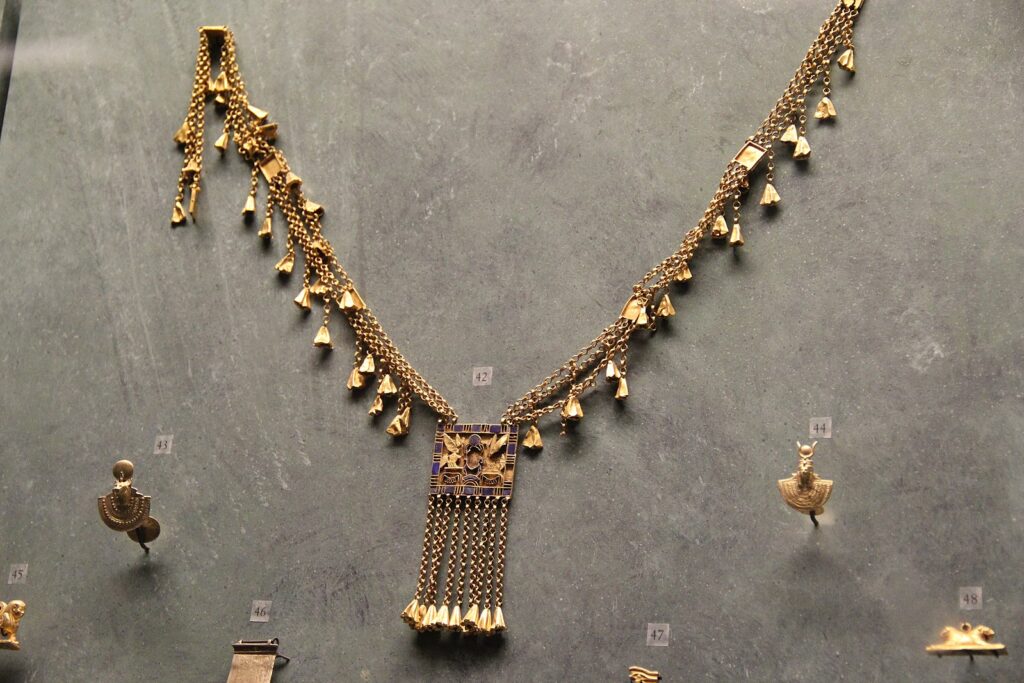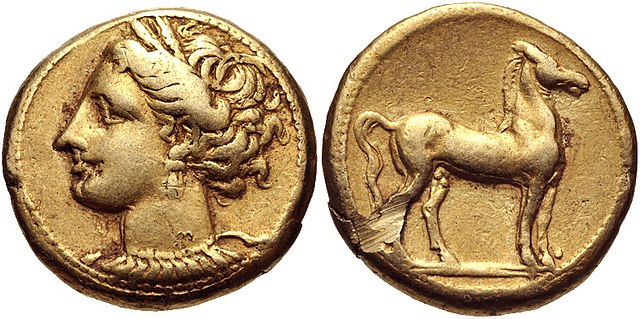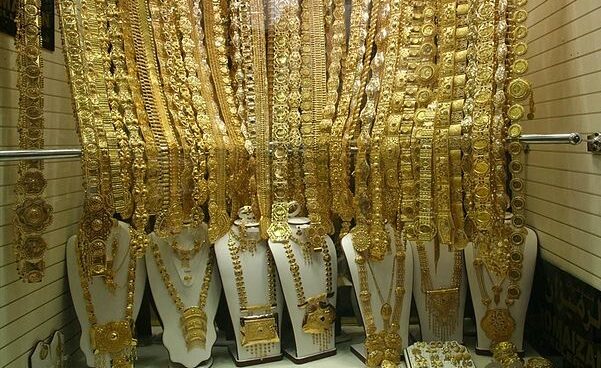Why is Gold Jewelry So Vital to Arab Culture?

By: Salma Heram / Arab America Contributing Writer
Throughout the Arab world and the diaspora, gold jewelry is seen as an essential part of Arab culture. Often adorning Arab women, gold jewelry has become a quintessential aspect of being Arab, from wearing simple pieces on a daily basis to large, ornate ones for weddings and special occasions. But how did this common tradition come to be so ingrained in Arab culture? Follow along as we take a look into the history of the Arab world to understand how gold jewelry became so common in our culture.
Brief History of Gold in the Middle East
While it is unclear when exactly gold was discovered in the Middle East, its use emerged at around the same time in different civilizations throughout the present-day Arab World. In 3000 BCE, the Sumerian civilization of present-day Iraq began to use gold to create intricate pieces of jewelry, many designs of which are still worn today. At the same time, Ancient Egyptian civilization had also begun to use gold as adornment, and in 2500 BCE gold jewelry was buried in the tomb of Djer, one of the kings of the First Egyptian Dynasty. In Ancient Egyptian society, gold was used for not just jewelry –including earrings, necklaces, rings, and bracelets– but also for other pieces of adornment like sandals and headpieces. Furthermore, gold was used to make statues, and bowls, and as paint for vases when Egyptians developed methods for creating gold leaf and mixing it with other metals to increase its longevity and to create color variations.

In 1500 BCE, gold became the standard global trade medium of exchange. At the same time, the shekel became the standard unit of measurement in the Middle East. The shekel is a coin originally weighing 11.3 grams of gold, containing electrum, a natural alloy of about two-thirds gold and one-third silver. This standardization exponentially increased gold’s significance in the Middle East, as the region’s economy was now based on it.

Significance of Gold in the Modern-Day Arab World
While different cultures continued to develop their own intricate jewelry designs, a new aspect came with owning jewelry aside from adornment: financial security. In the modern-day Arab world, women are often gifted gold for special occasions, especially during their weddings, when a woman’s husband and his family will gift the bride gold necklaces and bracelets, aside from the traditional wedding ring.

In the Muslim tradition in particular, brides are presented with a mehr of their choosing, a gift from the groom to her at the time of marriage. While a woman’s mehr varies from cash to other valuable items like furniture and clothing, many brides choose gold. For many, the reason is as mentioned before: financial security. Gold has always been a precious metal and because of this trait, its value often remains unchanged significantly regardless of the state of the economy at any given moment. While the value of gold of course fluctuates, it still provides a degree of stability and high monetary value to its owner. As such, in difficult times, women always had their gold jewelry to fall back on and sell if need be. Furthermore, this large portion of their assets was by nature condensed and easily accessible and transportable if they needed to move quickly.
Gold in the Arab Diaspora
In recent years, especially in the diaspora, young Arab women are beginning to take a different approach to their cultural value of gold. Many young Arab women choose to wear simpler, more practical gold jewelry on a daily basis. This includes, most commonly, gold necklaces with their name written in Arabic, as well as necklaces in the shape of their home country. These designs have made their way to other pieces of jewelry as well, like rings and bracelets with cultural and religious motifs embellishing the gold. This type of jewelry provides a new level of significance to the wearer: cultural pride. Through these designs, an Arab woman in the diaspora is able to proudly represent her culture through her jewelry. This recent spike in culturally significant jewelry has driven the launching of several Arab-owned and Arab-inspired jewelry businesses, with patrons being young Arab women and men all over the diaspora.
Gold Remains Engrained in Arab Culture
Gold jewelry holds immense significance to Arab women, from financial stability to a sense of cultural pride and identity. While the way Arab women wear gold jewelry is often changing, and while the designs will continue to evolve, one thing seems for sure– gold is truly an unwavering emblem of Arab culture.
Check out Arab America’s blog here!








